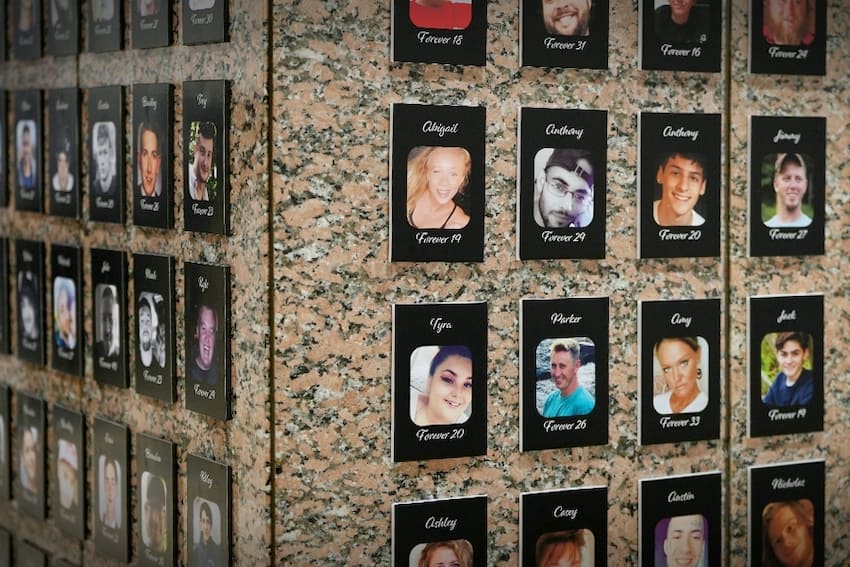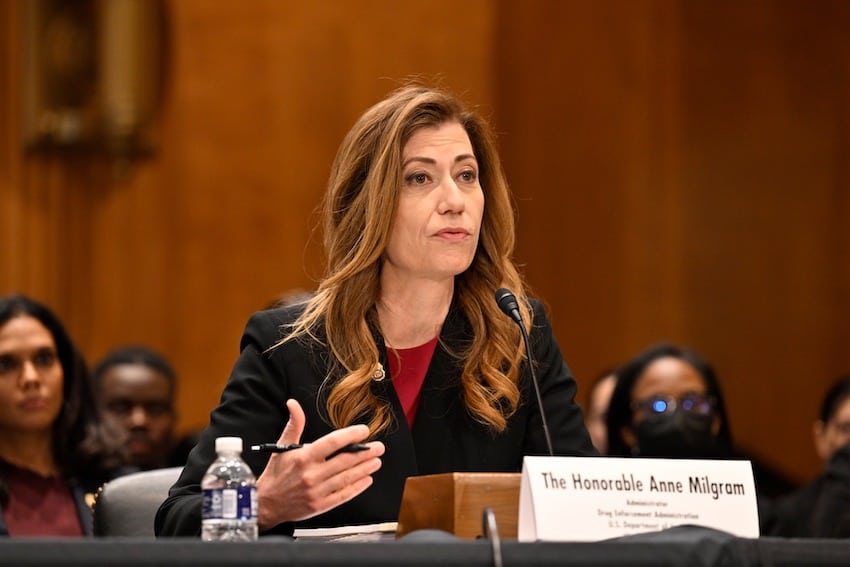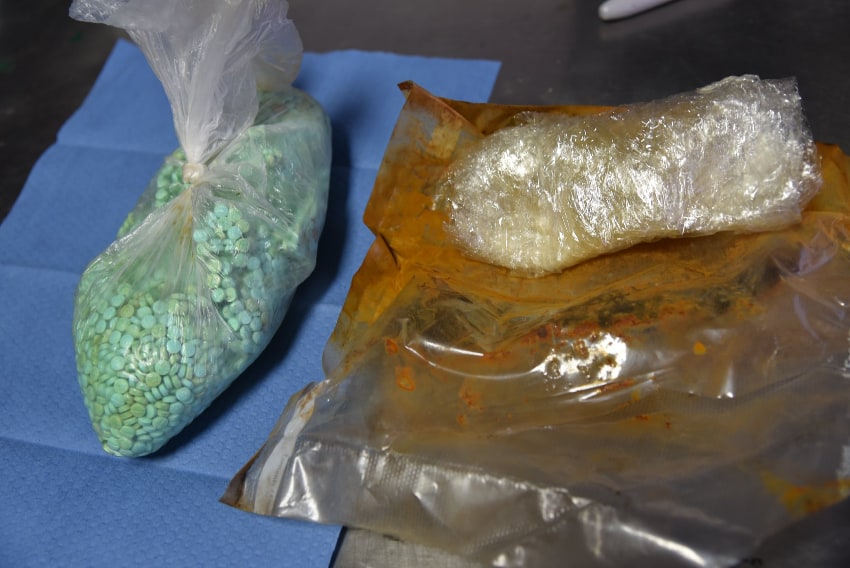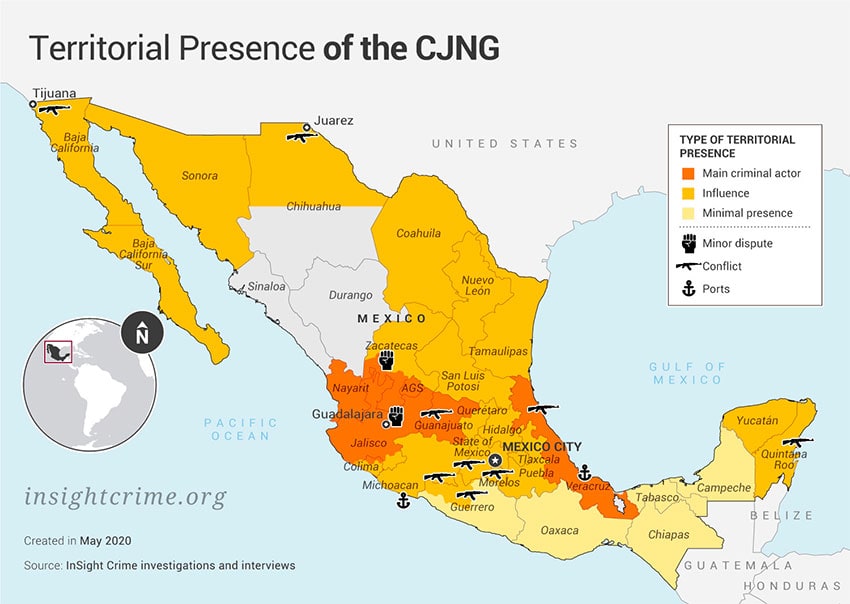The Sinaloa Cartel and the Jalisco New Generation Cartel (CJNG) pose “the greatest criminal threat the United States has ever faced,” but the Drug Enforcement Administration (DEA) is “laser-focused” on defeating them, DEA Administrator Anne Milgram said Thursday.
Milgram, a former attorney general in New Jersey who has led the DEA since 2021, appeared before a subcommittee of the United States House of Representatives’ Committee on Appropriations on Thursday.

In a written statement to the Subcommittee on Commerce, Justice, Science and Related Agencies, the DEA chief said that her agency’s “top operational priority is to relentlessly pursue and defeat the two Mexican drug cartels … that are primarily responsible for driving the drug poisoning epidemic in the United States.”
During her address to lawmakers, she asserted that the United States is going through the “most devastating drug crisis in our nation’s history,” highlighting that fentanyl is killing close to 200 Americans per day.
“Just two milligrams, the equivalent of a few grains of salt, can kill a person. It is now the leading cause of death for Americans between the ages of 18 and 45. More than cancer, more than COVID, more than terrorism, more than heart disease,” Milgram said.
“… The drug cartels responsible for bringing fentanyl into this country are ruthless and extremely violent criminal organizations,” she said.

Milgram said that the Sinaloa Cartel and the CJNG “rely on a global supply chain to manufacture and traffic fentanyl” and “on a global illicit finance network to pocket billions of dollars from those drug sales.”
“At DEA, we have undertaken a transformation to meet this moment. We have transformed our vision. We are now laser-focused on fentanyl, the drug that is killing the most Americans. We are laser-focused on the two cartels, Sinaloa and Jalisco, that are responsible for the vast majority of fentanyl that is flooding our communities,” she said.
In her written statement, Milgram noted that the DEA has “launched two cross-agency counterthreat teams to execute a network-focused operational strategy to defeat the Sinaloa and Jalisco Cartels.”
“The two teams are mapping, analyzing, and targeting the cartels’ entire criminal networks. The teams are composed of special agents, intelligence analysts, targeters, program analysts, data scientists, and digital specialists. This network-focused strategy is critical to defeating the Sinaloa and Jalisco Cartels,” she wrote.

The “new strategy” is working, Milgram said, noting that the DEA on April 14 charged 28 members and associates of the Sinaloa Cartel, including three sons of convicted drug lord Joaquín “El Chapo” Guzmán, who are collectively known as “Los Chapitos.”
The DEA administrator told lawmakers that El Chapo’s sons, Ovidio, Iván and Alfredo, “became the new leaders of the Sinaloa Cartel” after their father’s arrest and made the “global drug trafficking empire … more ruthless, more violent [and] more deadly, and used it to spread a new poison — fentanyl.”
“Let me be clear: the Chapitos pioneered the manufacture and trafficking of the deadly fentanyl that is flooding our country today and is responsible for countless American deaths,” she said.
“… They know that they are poisoning and killing Americans, and they don’t care because they are making billions of dollars,” Milgram said.
She noted that eight of the 28 members of the Sinaloa Cartel network who were recently indicted in the United States — including Ovidio Guzmán — are in custody, and she stressed that the DEA is requesting the extradition of the seven who are detained outside the U.S.

“Twenty remain at large in China and Mexico, and we are requesting their arrest,” Milgram said.
With regard to the CJNG, led by the notoriously elusive Nemesio “El Mencho” Oseguera Cervantes, the DEA administrator said in her written statement that the organization has “illicit drug distribution hubs in Los Angeles, Seattle, Charlotte, Chicago, and Atlanta.”
“Internationally, the Jalisco Cartel has a presence and influence through associates, facilitators, and brokers on every continent except Antarctica,” Milgram wrote, adding that the CJNG smuggles narcotics, including fentanyl, into the United States “by accessing various trafficking corridors along the southwest border that include Tijuana, Mexicali, Ciudad Juárez, Matamoros, and Nuevo Laredo.”
She said that the DEA’s “requested and anticipated funding” of US $3.7 billion in fiscal year 2024 would provide the agency “with the resources needed to build upon the work we have accomplished to defeat the cartels and emerging drug threats.”
During the subcommittee hearing, Republican Representative Jake Ellzey asked Milgram whether she would support a U.S. military deployment against Mexican cartels, as some of his congressional colleagues have proposed.
“Any authority that Congress gives us we will use to the fullest extent,” she responded.
“… And that’s what we’re doing right now. We’re trying to use every authority, every piece of information, every dollar to save American lives.”
Ellzey also asked Milgram whether Mexico is cooperating with the DEA’s mission to combat cartels and the fentanyl they traffic.
“Or are they hindering? Or are they so corrupt? What I’d like to know is, are they a failed narco-state?” the Texan lawmaker said.

“We all have to do more. We are working to do more and we want the Mexicans to work with us and we want them to do more,” Milgram said.
Questioned whether there are “players” in the Mexican government that the DEA doesn’t want to deal with because it knows they are corrupt, she responded:
“We follow the evidence wherever it goes. … We did an investigation, and an arrest and extradition of JOH, Juan Orlando Hernández, the former president of Honduras, and … we’ve also charged … Nicolás Maduro, the president of Venezuela. And so DEA does not back down from doing that kind of work, and we will continue to follow the facts and evidence wherever it takes us.”
“As part of the Chapitos indictment,” Milgram added, “we talk about the corruption, we talk about the corruption that fuels narcotics trafficking in Mexico and globally — and so again, wherever the evidence and the facts take us, we will go.”
Former Mexican security minister Genaro García Luna was convicted in the United States earlier this year on charges he colluded with the Sinaloa Cartel to traffic narcotics, a verdict President López Obrador has used to support his claim that Mexico was a narco-state during the 2006–12 presidency of Felipe Calderón.
Milgram’s appearance before lawmakers came two weeks after Mexico and the United States committed at a bilateral security meeting in Washington to “continue joint work to dismantle the fentanyl supply chain and the Sinaloa Cartel and the Jalisco New Generation Cartel on both sides of the border.”

In late March at the the U.S.-Mexico Synthetic Drug Conference in Mexico City, officials from both countries emphasized the importance of cooperating to combat the illicit fentanyl trade.
López Obrador and other federal officials have recently highlighted the Mexican government’s efforts to combat the trafficking of fentanyl as they sought to refute claims from some Republican Party lawmakers in the U.S. that Mexico is doing little to stop the drug flowing across the northern border. López Obrador even wrote to Chinese President Xi Jinping in an attempt to enlist his help in the fight against fentanyl, and earlier this month created a commission to combat arms and synthetic drug trafficking into the country.
In addition, the lower house of Congress this week approved an anti-fentanyl law that stipulates harsh punishments including lengthy jail sentences for anyone found using precursor chemicals to make synthetic drugs.
Mexico and the United States agree that fentanyl precursors are shipped to Mexico from Asia and in particular China, but a spokesperson for the Chinese government declared April 6 that “there is no such thing as illegal trafficking of fentanyl between China and Mexico.”
Mexico News Daily
